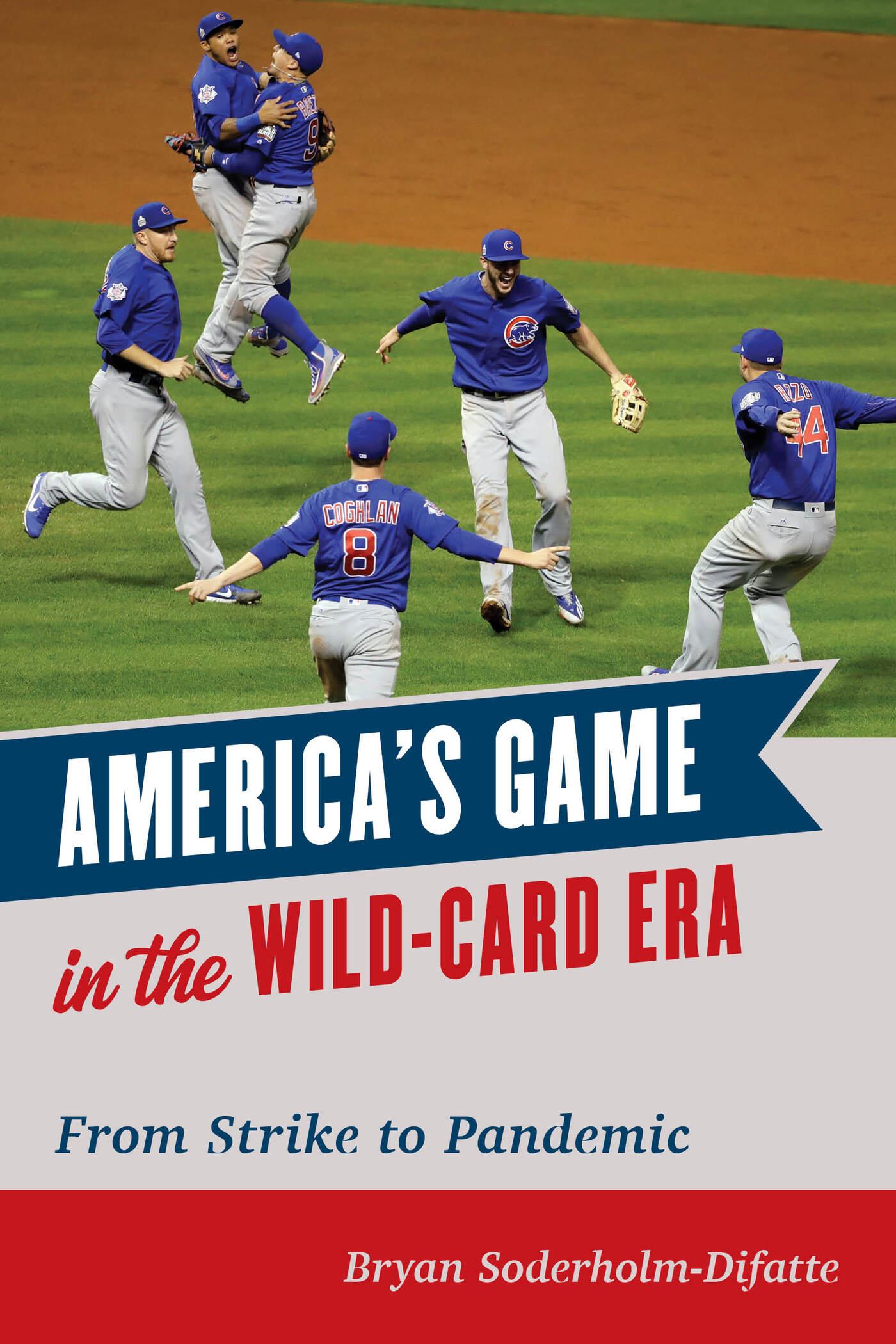Americas Game in the
Wild-Card Era
Americas Game in the
Wild-Card Era
From Strike to Pandemic
Bryan Soderholm-Difatte
ROWMAN & LITTLEFIELD
Lanham Boulder New York London
Published by Rowman & Littlefield
An imprint of The Rowman & Littlefield Publishing Group, Inc.
4501 Forbes Boulevard, Suite 200, Lanham, Maryland 20706
www.rowman.com
6 Tinworth Street, London SE11 5AL, United Kingdom
Copyright 2021 by The Rowman & Littlefield Publishing Group, Inc.
All rights reserved. No part of this book may be reproduced in any form or by any electronic or mechanical means, including information storage and retrieval systems, without written permission from the publisher, except by a reviewer who may quote passages in a review.
British Library Cataloguing in Publication Information Available
Library of Congress Cataloging-in-Publication Data
Names: Soderholm-Difatte, Bryan, author.
Title: Americas game in the wild-card era : from strike to pandemic / Bryan Soderholm-Difatte.
Description: Lanham : Rowman & Littlefield Publishing Group, 2021. | Includes bibliographical references and index. | Summary: This book examines the competitive landscape of Major League Baseball during the wild-card era, including the major storylines for all 30 teams, division races, and the state of dynasties in a new age of baseballProvided by publisher.
Identifiers: LCCN 2020043419 (print) | LCCN 2020043420 (ebook) | ISBN 9781538145937 (Cloth : acid-free paper) | ISBN 9781538145944 (ePub)
Subjects: LCSH: BaseballUnited StatesHistory20th century. | BaseballUnited StatesHistory21st century. | Baseball teamsUnited StatesHistory20th century. | Baseball teamsUnited StatesHistory21st century. | Baseball playersMiscellanea. | Major League Baseball (Organization)History. | BaseballHistory20th century. | BaseballHistory21st century.
Classification: LCC GV863.A1 S6876 2021 (print) | LCC GV863.A1 (ebook) | DDC 796.357/640973dc23
LC record available at https://lccn.loc.gov/2020043419
LC ebook record available at https://lccn.loc.gov/2020043420
 TM The paper used in this publication meets the minimum requirements of American National Standard for Information Sciences Permanence of Paper for Printed Library Materials, ANSI/NISO Z39.48-1992.
TM The paper used in this publication meets the minimum requirements of American National Standard for Information Sciences Permanence of Paper for Printed Library Materials, ANSI/NISO Z39.48-1992.
To Alexandra. Thanks for being you.
Authors Note
The 25 years since the end of the 19941995 players strike have been arguably the most dynamic quarter-century in baseball history. Major League Baseball introduced wild-card teams to the postseason and interleague games to the regular season. Bud Seligs consolidation of power, including bringing the administrative functions of both leagues under his office, made him the games most powerful commissioner since the 19211944 reign of Judge Kenesaw Mountain Landis, baseballs first commissioner. The influx of Latin and Asian players changed the shape of baseballs demographics. There was a boom in new stadiums. An analytics revolution reshaped how rosters are constructed, the relationship between managers and the front office, defensive alignments and offensive strategies, how pitching staffs are put together and used, and how players and managers prepare for games. The rise of the power game between pitchers and batters has led to unprecedented strikeout and home-run totals. Major League Baseball as an institution became more profitable than ever. The same is true for the financial value of its franchises.
But there has also been an undercurrent of edginess. The assaults on baseballs hallowed home-run records by Mark McGwire, Sammy Sosa, Barry Bonds, and Alex Rodriguez have been sullied by baseballs repeated steroids scandals. Baseball has had to grapple with significant disparities affecting the competitiveness of small-market clubs relative to much-better-capitalized large-market teams. There has been controversy about competitive integrity because of teams deliberately deciding not to compete in their divisions for multiple years in order to build for the future. The owners unfinished business of trying to rein in player payrolls has been a persistent source of friction with the players union, raising the prospect of another devastating players strike in 2021 or 2022. The game has also had to grapple with a cheating scandal calling into question the legitimacy of the Houston Astros 2017 World Series championship. And out of nowhere, just as the 2020 season was about to begin, came a global pandemic that shut down the game for the first time since the 19941995 strike before a rump 60-game schedule finally got under way in the late-July dog days of summer.
Together with The Reshaping of Americas Game: Major League Baseball since the Players Strike, this book covers the years from baseballs return from the strike to the pandemic. Its focus is on the competitive environment of baseballs new wild-card era. The two books together complete a history of major league baseball that began with Americas Game: A History of Major League Baseball through World War II (2018), followed up by Tumultuous Times in Americas Game: From Jackie Robinsons Breakthrough to the War over Free Agency (2019).
Introduction
Back to Baseball: The Wild-Card Paradigm Shift
On April 25, 1995, the Florida Marlins took the field in Miami to take on the Los Angeles Dodgers, officially ending the players strike that began on August 12 the previous year over Acting Commissioner Bud Selig and the major league owners hard line in refusing to compromise on demanding that the players agree to a salary cap in the next labor agreement between the league and the players union. The strike had already cost Major League Baseball the entire 1994 postseason. There was no World Series. Major League Baseball was back in business thanks to a ruling less than four weeks earlier by federal judge Sonia Sotomayor that the owners could not unilaterally impose a salary cap to rein in free agency in the absence of a negotiated new collective bargaining agreement. Her ruling did not itself end the strike, but the owners understood their continuing hard line to limit players earning potential in free agency would lose in the courts.
Baseballs fans cursed both sides houses. Players were booed their first games back. So was Selig. Attendance was slow to recover, and in fact would not that year or the next. But Cal Ripken Jr. breaking Lou Gehrigs iconic record for consecutive games played on September 5, 1995, was a grace note that touched on how baseball is sewn into the fabric of Americas soul.
Nothing, however, compares with the drama and excitement of a taut pennant race and tense games with everything on the line. And that was what the Seattle Mariners gave baseball in September and October 1995. They overtook the California Angels after trailing them by 12 games with just 38 left on the schedule to win the AL West in a one-game playoff to decide the division. Then came their compelling takedown of the New York Yankees in their division seriesthe first year of the prequel to the league championship series occasioned by baseballs 1994 realignment to three divisions and a wild-card team in each league.
The Mariners were on life support in Seattle. One of the American Leagues 1977 expansion teams, the Mariners had had just two winning seasons in their first 18 years. With a history of front-office mismanagement, including an unwillingness to invest in player development or established players to build and sustain a competitive ballclub, the Mariners had few star players to entice their fan base. And they played in a multipurpose domed stadiumthe Kingdome, built in 1976that was not aging well; in 1994, falling tiles from the dome forced the Mariners to play what proved to be all of their final 20 games on the road before the strike prematurely ended the season. Playing the familiar build-it-or-we-will-leave card practiced by professional sports teams angling for new stadiumsand given the reluctance of local voters to approve funding for a new ballparkthe Mariners seemed certain to leave Seattle in the near future.
Next page
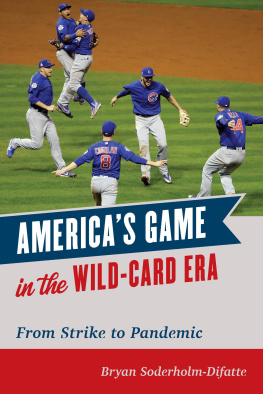
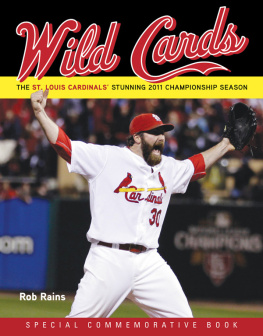

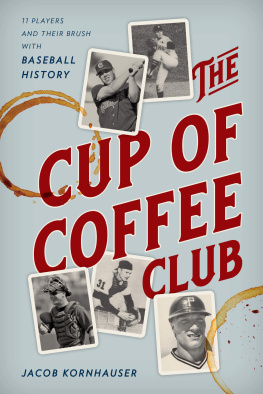
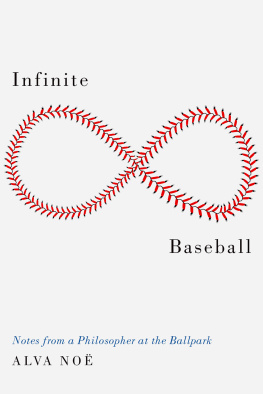
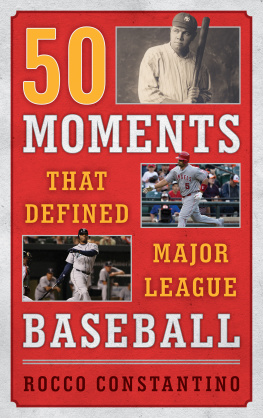
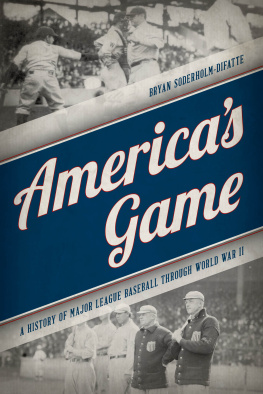


 TM The paper used in this publication meets the minimum requirements of American National Standard for Information Sciences Permanence of Paper for Printed Library Materials, ANSI/NISO Z39.48-1992.
TM The paper used in this publication meets the minimum requirements of American National Standard for Information Sciences Permanence of Paper for Printed Library Materials, ANSI/NISO Z39.48-1992.